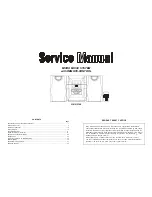
ruby User Manual
Version: 6.6.0/1
56/78
6. Operation
6.17
Snapshots
6.17.1 Introduction
The snapshots system includes five local memories (stored on the DSP Core) plus an unlimited number of
VisTool snapshots (stored on the control PC).
The local memories always save and load settings globally, whileVisTool snapshots come in two types: Full
snapshots (to save settings globally) or Source snapshots (to save only the settings for the source in access).
It is not recommended that snapshots are loaded during a live broadcast, as to do so may result in sources
being taken off air!
6.17.2 What’s Stored in a Snapshot?
The following settings are stored in all snapshots:
·
Fader Strip Assignments
– the assignment of sources and buses to fader strips.
·
User Labels
– the two User Label text lines for all sources and buses.
·
RAVENNA/AES67 Stream subscriptions
handled via a RAVENNA pool.
·
Input Parameters
– such as mic gain, 48V, etc. for all sources.
·
DSP settings
– EQ, Dynamics, Limiter, Delay and De-Esser for all sources and buses.
·
Fader Levels (optional)
– see below.
·
Bus Assignments
– the assignment of sources to summing buses and their send levels.
·
Insert Assignments
– the assignment of insert devices for all sources.
·
VCA Group Assignments
– the assignment of all sources to VCA Groups.
·
Logical States
– up to 32 logical states defined by the ON-AIR Designer configuration (via "System ->
Definition -> Parameter = Logic Snapshot").
·
Matrix Connects
– up to 128 matrix connections defined by the ON-AIR Designer configuration (via
"System -> Definition -> Parameter = Matrix Snapshot").
Fader Levels
The
Production Mode (Save Value)
option, in the ON-AIR Designer configuration, determines whether fader
levels are stored and recalled by snapshots. This option is set in the "System -> Definition -> Parameter =
Fader" branch of the 'Tree Definition'.
·
Production Mode
(enabled) = fader levels are loaded. Recommended for production systems.
·
Production Mode
(disabled) = fader levels are ignored (not loaded). Recommended for on-air systems.
Other Recall Options
The following options, in the ON-AIR Designer configuration, affect how snapshot settings are recalled globally
across the console. These are set in the "System -> Definition -> Parameter = Snapshots" branch of the 'Tree
Definition'.
·
Load max. Fader No.
- specifies whether parameters are loaded for all faders or only up to a certain
fader number. You can use this option to exclude fader strips from snapshot recall.
·
Load Audio Always
- if ticked, audio-related parameters are loaded for all faders regardless of the
Load max. Fader No
. You can use this option to load audio-related parameters to all faders, while
loading fader strip assignments up to a certain fader number.
·
Enable Load Groups Logic
- can be used to change which source parameters load depending on
fader status. By default, all parameters if source faders are closed, and do not load if source faders are
open. By assigning control signals to the various load group inputs, you can modify this behaviour as
you wish. See Selective Loading of Source Parameters.
















































